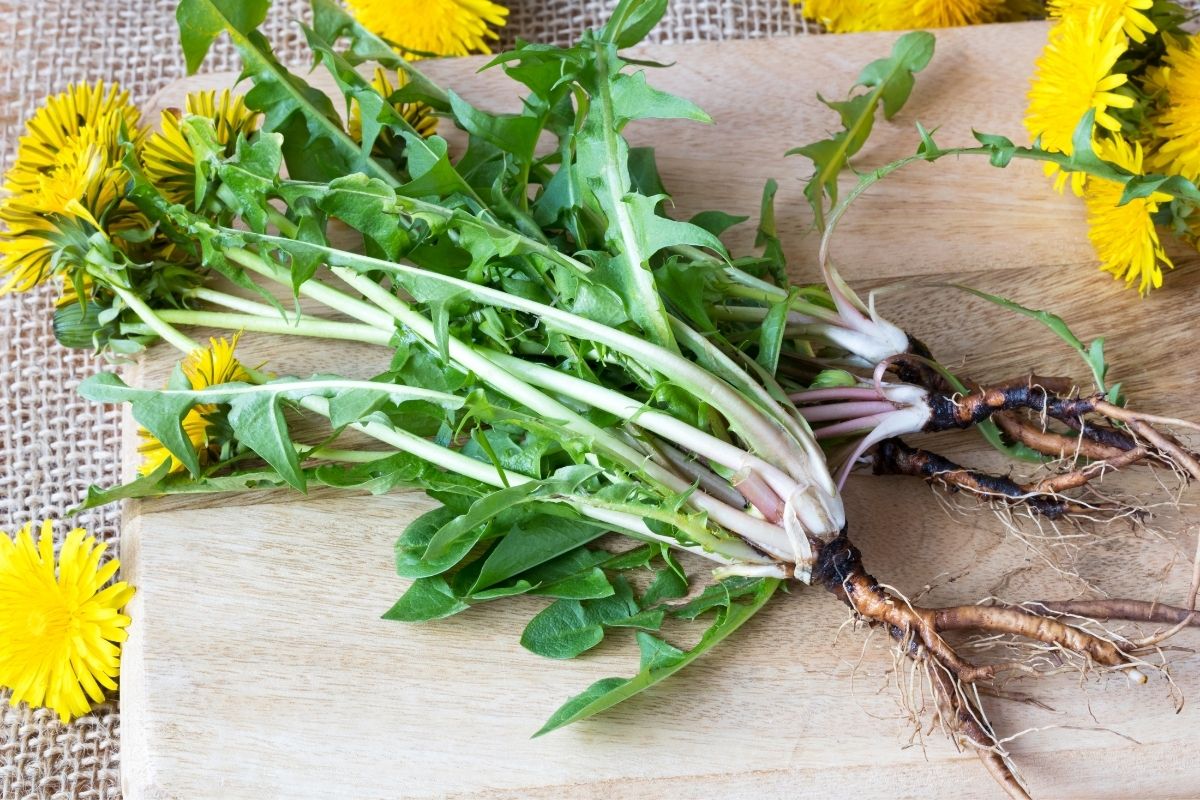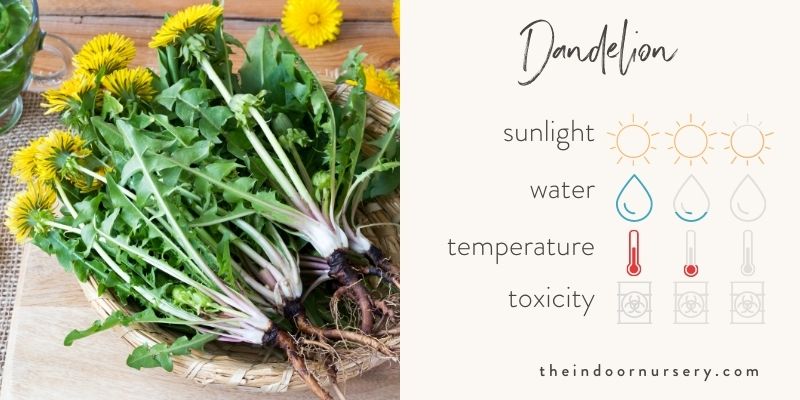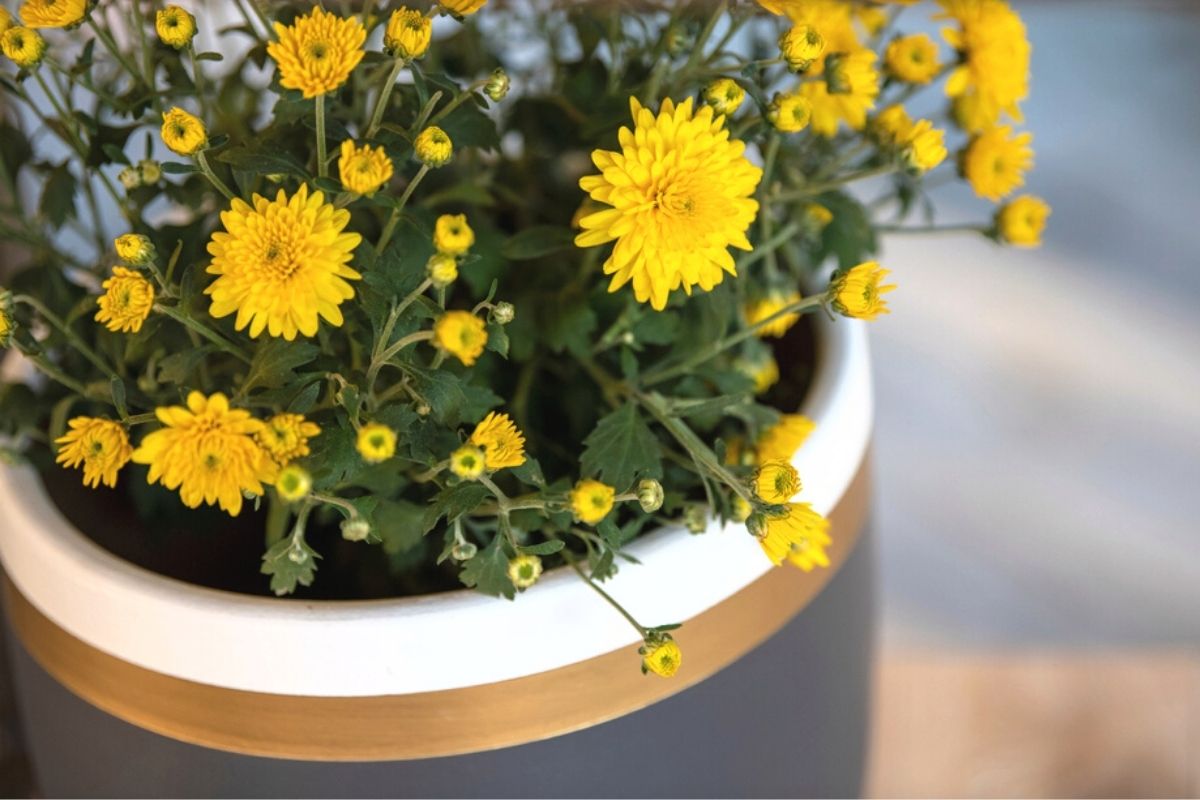plant description
Dandelions are familiar springtime flowers, known for their bright yellow blooms that dot across our lawns, as well as for the distinctive white fluffy seeds they release. These wildflowers are frequently referred to as weeds since they compete with grass for space in yards and fields, seeming to grow anywhere. However, the resilient nature of this plant allows it to survive in poor soils and gives it powerful health benefits, including anti-inflammatory and antioxidant properties, when dandelion greens and flowers are eaten raw, cooked, or prepared as a medicinal dandelion tea or tincture. Dandelions are among the first flowers to sprout in spring, coming in with the cool-season grasses.
Their sweet petals provide an important early source of pollen to bees and other insects, and their nutrient-dense stems and leaves fertilize the soil at the end of the spring season. Dandelion plants have a single, deep taproot that reaches down below the topsoil for minerals and other nutrients, and for this reason, they do well in compacted and depleted ground. The Dandelion’s efficient use of nutrients makes it one of the most nutritious plants out there.
plant facts
| common names | Dandelion, Lion’s Tooth, Cankerwort, Blowball, White or Wild Endive |
| botanical name | Taraxacum officinale |
| no. of species | More than 200 |
| family | Asteraceae |
| biological life cycle | Perennial |
| foliage | Broadleaf |
| mature size | 2-6 inches tall, spread is generally equal to height |
| time to maturity | 4-6 weeks |
| origins | Northern Eurasia |
| light conditions | Full sun, tolerates partial shade |
| soil type | well-draining |
| water ph | Slightly acidic to neutral (6 to 8) |
| usda zone | 3-9 |
| toxicity | none |
Popular Varieties/Related Plants:
- Common Dandelion (Taraxacum officinale) – Edible cultivars include De Montmagny, Coeur Plein, Ameliore, Arlington, and Improved Broad Leaved Dandelion
- Red-seeded dandelion (Taraxacum erythrospermum)
- California Dandelion (Taraxacum californicum)
- Japanese White Dandelion (Taraxacum albidum)
Maintenance
light 🔆
Best light: Full sun
Dandelions grow in open fields in nature, and like a lot of bright light. As a resilient plant, they can tolerate partial shade, but the more light there is, the better the flowers and leaves will grow. Since they like a full day of sunlight, put your dandelion plants in a bright indoor area like a window sill, a bright room, or in the greenhouse.
water 💧
Water needs: Once or twice a week
Your potted dandelion plant likes well-draining soil. The plant’s single taproot grows deep into the ground, so the soil should be kept moist, but it isn’t overly sensitive to dryness. When you’re growing dandelion for food, regular watering means bigger and stronger leaves (but be careful not to overwater!) Water the plant when the top inch of the soil is dry, keeping them watered regularly, once or twice a week.
humidity 🌫️
Dandelions don’t have any humidity requirements, and they thrive in dry to humid conditions. The temperature will affect the plant more than the humidity, so no special precautions need to be taken. In general, the moist conditions would encourage growth.
temperature 🌡️
As a cool-season flower, dandelions grow in early spring through early to mid-summer. They like outdoor temperatures that are between 50 and 70 degrees, so they do well indoors in the temperate climate.
fertilizer 💩
Although dandelion plants can grow in depleted soils due to their deep roots, they will do best in fertile soil. When growing dandelions for food, you can fertilize them as you would other vegetables to help their roots, leaves, and flowers grow. An all-purpose fertilizer will help maintain your soil’s nitrogen, potassium, and phosphorus profile to support growth of all parts of the plant.
soil 🪨
Dandelions like well-draining soil: their long taproots reach for groundwater below the topsoil, which gives them an advantage when they grow amongst grasses whose root systems sit in the top few inches of the ground. Their roots can reach down 6 inches or more, so they like to be planted in deep soil. In addition to the soil’s nutrient profile, be sure the pH level is right for the dandelion plant, in the 6-8 range (neutral to slightly acidic).
Soil Type: Deep, well-draining soil
pH level: 6-8
repotting 🪴
Whether you’re digging up a dandelion from a field, moving a garden dandelion to a planter, or transferring from pot to pot, be sure to dig out the entire plant when transferring it. Make sure the taproot is intact so the plant can start absorbing moisture as soon as it is repotted.

The destination pot should be deeper than 6 inches, the average mature dandelion root length. When planted in a deeper pot filled with a well-draining, fertilized soil, the dandelion will have room to establish itself and spread out in the planter.
propagation 🌱
Dandelions are simple herbaceous perennials, meaning their single root will persist over winter in the wild once a plant is established. The flower spreads by its puffy floating seeds, which are carried from location to location by the wind. To propagate a dandelion plant, you either must dig up an entire plant (taproot and leaves), or you can plant the dandelion seeds in new soil. Dandelions will germinate in a matter of days once planted.
pruning 🌿
If you’re growing dandelions as an indoor plant, you can prune the flowers as they start to wilt as you would with other flowering potted plants. Dandelions that are being grown as food, however, will be regularly cut back as you use the blooms, leaves, and roots in teas and salads, or for any of the many other uses the dandelion plant provides. The flower’s leaves grow outwards, and some vegetable varieties grow upwards in cones with larger leaves and fewer flowers.
pests and diseases 🐛
In nature, the plant is very pest resistant and doesn’t have many problems. Like other potted plants, it can be susceptible to root rot from undrained soil. Due to their deep taproot, dandelions will be damaged by water-saturated soil.

Tips for growing dandelion
- Grow Dandelion microgreens. All parts of the dandelion plant are edible: the root, flowers, buds, and leaves. It’s actually a superfood! Fresh dandelion greens are nutrient-dense, tender leaves high in carotenoids, B vitamins, vitamin C and A, as well as many other nutrients and minerals. When you grow dandelions as microgreens, you harvest the leaves while they’re young. These vibrant young leaves are less bitter than mature dandelion greens.
- Prepare Dandelion Tea. Dandelion tea is easy to make! You simply put the yellow petals of a freshly cut (and rinsed) flower head in a tea steeper and put it into boiling water. Another method is known as dandelion coffee, where the roasted roots of a dandelion plant are steeped in water with spices and other hot drink accompaniments. In both cases, it provides a versatile herbal remedy or relaxing drink.
- Avoid dandelions from areas where pesticides are used. While it’s tempting to harvest dandelions from the yard, many homeowners treat their lawn with pesticides and herbicides, often in an effort to suppress dandelions among other undesired growth. If you’re not sure, avoid picking them from the lawn. If you find them in the wild, or grow them in your garden, there’s no reason not to pick a few.
- When growing Dandelions for food, do regular soil tests. Dandelions grow in the wild where topsoils are depleted and other plants can’t grow as well because they reach deeper into the ground for nutrients. The dandelion plant is known as a ‘dynamic accumulator,’ meaning it absorbs a lot of nutrients and, when it dies, fertilizes the soil as the plant material is broken down. So, despite being able to grow in poor quality soil, it still requires nutrients to grow, and it will deplete the soil of those nutrients as it does.
Common Problems / FAQs:
Can you grow more than one dandelion in a pot?
When you grow dandelions, they should be planted one per pot because they need a bit of space to grow. In a regular planter, there usually isn’t space for more than one, but in larger containers, they can be spaced a couple of inches apart much more easily. Each plant spreads out, and will compete for space. If there are too many, none will get there; an individual plant has better chances alone in a pot.
Why are my dandelions small and thin?
If your dandelion plants are looking smaller or thinner than you were expecting, they may not be getting enough water or nutrients. Check the soil’s moisture, as well as the nutrient content and pH. The plant may be weaker if it’s not getting enough light. Otherwise, consider the variety you’re growing: common dandelions are smaller than cultivated food varieties, which can grow dandelion greens to a foot or more in height and which form a cone shape, rather than a flat spread.
Can I use grow lights for dandelions?
Dandelions love sunlight! The long hours that a grow light can give them would make them very happy if there isn’t enough natural light. They can tolerate up to 16 hours of sunlight a day, which would give the dandelions more energy to grow bigger and faster, giving you a good turnover as you harvest the leaves and flowers from mature plants.
Shop our recommendations
- The Best Hydroponic Tower For Indoor Gardening
- 10 Best Worm Composter Bins For Easy Homemade Compost
- The Best pH Meter For Soil
- The 6 Best Dehumidifiers For Grow Tents
- The Best Complete Indoor Hydroponic Grow System
- 5 Best Grow Light Strips For Indoor Plants
- TESTED: Aerogarden vs Click and Grow Smart Garden
- Our *hands on* MARS HYDRO TSW 2000 review (with photos)
- 7 Best Hygrometers For Indoor Plants
- The Best Coco Coir For Your Plant’s Healthiest Root System Ever



Hey, Marcia! Thanks for reading :) gosh, that's a great idea to double up on your watering globe and spike.…